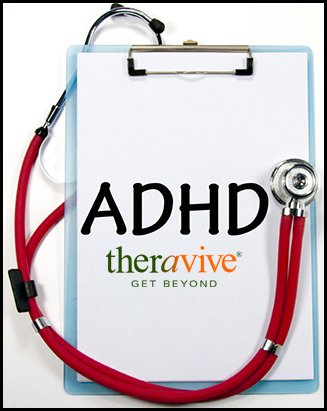 Attention Deficit Hyperactivity Disorder has become a common diagnosis among U.S. children, especially boys. The Centers for Disease Control and Prevention (2013) recently released the results of its National Survey of Children’s Health for 2011-2012. In it the CDCP reported an estimated 6.4 million children with a diagnosis of ADHD. This number represents approximately 11% of the children in the United States.
Attention Deficit Hyperactivity Disorder has become a common diagnosis among U.S. children, especially boys. The Centers for Disease Control and Prevention (2013) recently released the results of its National Survey of Children’s Health for 2011-2012. In it the CDCP reported an estimated 6.4 million children with a diagnosis of ADHD. This number represents approximately 11% of the children in the United States.
Quite a startling fact considering Leon Eisenberg, a psychiatrist many consider to be the “scientific father of ADHD,” stated in an interview with Der Spiegel, a German weekly, in 2012 that “ADHD is a prime example of a fabricated disease.” Eisenberg called for more rigorous gathering of necessary information prior to making a definitive diagnosis of the disorder.
Unfortunately, this type of information appears to be gathered less often than needed when making a diagnosis of ADHD. While there are specific diagnostic criteria listed in the Diagnostic and Statistical Manual, the guideline for professionals diagnosing this and other psychological conditions, many times the final diagnostic criteria utilized are mostly subjective.
Perhaps this is one reason for the astounding increase of 41% in the diagnosis of ADHD over the past decade.
Types and Symptoms of ADHD
There are three basic types of ADHD presentation, each with a set of specific criteria that should be present for the diagnosis to be made (American Psychiatric Association, 2000).
Hyperactive-Impulsive Type. The dominant factor seen in this type is extreme activity, inability to sit still, and acting impulsively without consideration of the consequences of this behavior. Boys are diagnosed with this type three to four times as often as girls. Possibly because these types of behaviors are guaranteed to come to the attention of teachers.
Inattentive Type. Children with this type of ADHD have difficulty focusing and sustaining attention. Disorganization is dominant, as well as difficulty following directions and instruction. Girls are more likely to be diagnosed with this type. However, since these behaviors are less disruptive in the classroom, there is a likelihood of under-diagnosing this type.
Combined Type. As would be surmised from the name, this type combines the symptoms and signs of the other two.
Prevalence of ADHD
As reported by the Centers for Disease Control and Prevention (2013), approximately 11% of children ages 4 through 11 were diagnosed with ADHD in 2011. This is an increase from 7.8% in 2003 and 9.5% in 2007. These statistics clash with the estimate of 3-7% stated in the DSM-IV-TR.
The rate of increase over the past decade is an astounding 41% as reported in the New York Times of April 1, 2013.
What are the reasons for this dramatic increase in the diagnosis of this condition? One possibility is the relative age of the child being diagnosed.
Richard Morrow, et. al, (2012) conducted a study of over 900,000 Canadian school children. They concluded that the younger children in classrooms are more often diagnosed with ADHD than those who were older, even those born in the same calendar year. One possible reason for this relates to the relative immaturity seen in those younger children.
Todd Elder, of Michigan State University, reported similar results in a study (2010) of American school children. His results showed about 8.4% of children born one month prior to their state’s cutoff date for admission to kindergarten were diagnosed with ADHD. This compared to 5.1% of those children born one month after the cutoff date. Relative immaturity was also a strong factor in this study.
Likewise, the criteria used to diagnose ADHD may be a factor in the prevalence of the diagnosis. A study (Guardiola, Fuchs, & Rotta, 2000) of Brazilian school children reported use of the DSM-IV-TR diagnostic criteria resulted in more children diagnosed with ADHD than when alternative criteria were used. With the DSM-IV-TR criteria, 18% of children were given the diagnosis. But utilizing the alternative criteria resulted in only 3.5% of both boys and girls were given the diagnosis. Researchers concluded that the DSM criteria also detected other behavioral disorders in addition to ADHD.
 Relationship of Gender to Diagnosis of ADHD
Relationship of Gender to Diagnosis of ADHD
Overall, the person most likely to be given the diagnosis of ADHD in school children is a boy. Too often, boys are given this diagnosis on the basis of teacher recommendation. Teachers notice the types of behaviors typically related to ADHD in boys more often than girls.
One possible reason for this is that boys exhibit behaviors associated with ADHD normally. Decreased organization, impulsivity, inability to sit still, overall increased activity level are seen in normal boys at a high frequency.
However, these are the very types of behaviors that stand out in U.S. classrooms. Most school classrooms require students to sit still, be quiet, and pay attention to the teacher in the front of the room for up to six hours at a time. How difficult it is for boys to do so. Boys are very different from girls from the standpoint that they are much more action-oriented than girls. They want to move, to run, to play. Not the kinds of behaviors rewarded in today’s sedentary school environment.
So, many times boys who are normally active and rambunctious are diagnosed as ADHD due to their activity level.
Over-diagnosed or misdiagnosed?
There has been continuing concern lately from professionals and parents about the possibility of children being over-diagnosed or misdiagnosed as ADHD. The increasing rate of occurrence of the diagnosis and the increasing number of children taking stimulant medications for it, along with the potential for both short-term and long-term negative effects, are the reasons behind this concern.
Anecdotal evidence suggests teachers being relied upon by both parents and physicians to gather the data needed to make the diagnosis of ADHD. This may pose problems.
For example, girls tend to adhere to the expectations of teachers much more frequently and willingly than boys. Even though girls may fit the criteria for inattentive type ADHD, they don’t cause trouble in the classroom. Thus, they may be overlooked. Boys meet the criteria for the hyperactive type of ADHD and thus stand out in the classroom. By nature, boys are more active and less disciplined than girls. Thus, more boys get the attention of the classroom teacher and may be referred for treatment for ADHD.
The environment of today’s schools themselves may tend to increase the potential for misdiagnosis of boys. Classroom structure and expectations require sitting still, paying attention, and being quiet. Not characteristics of boys in general.
Plus, there may some evidence that the criteria set forth by the DSM-IV-TR itself may increase the number of children given the diagnosis of ADHD. Elder’s study (Elder, 2010, op cit.) suggested about 900,000 of the 4.5 million children diagnosed with ADHD may in fact be misdiagnosed.
What To Do?
Clearly, parents must be aware of the criteria used in this diagnosis. Teachers must report unbiased behaviors regardless of expectations of schools. Perhaps most importantly, professionals who are given the responsibility for making the diagnosis of ADHD must adhere closely to evidence-based criteria for diagnosing children with ADHD.
The future of children in the U.S., those 4.5 million plus of them diagnosed as ADHD, is vitally important. Whatever can be done to make that future more positive should be done.
_________________________________________________________________________________________________________________________________
American Psychiatric Association. (2000). Diagnostic and Statistical Manual of Mental Disorders, Fourth Edition, Text Revision. Washington, D.C. American Psychiatric Association.
Centers for Disease Control and Prevention. (2013).
Elder, T.E. (2010). The importance of relative standards in ADHD diagnoses: Evidence based on exact birth dates. Journal of Health Economics, 29, 641-656. doi: 10.1016/j.jhealeco.2010.06.003.
Guardiola, A., Fuchs, F.D., & Rotta, N.T. (2000). Prevalence of attention-deficit hyperactivity disorders in students. Comparison between DSM-IV and neuropsychological criteria. Arg Neuropsyquiatr. 58(2B), 401-407.
Morrow, R.L., Garland, J., Wright, J.M., Maclure, M., Taylor, S., & Dormuth, C.R. (2012). Influence of relative age on diagnosis and treatment of attention-deficit/hyperactivity disorder in children. Canadian Medical Association Journal, 184(7), 755-762.. doi: 10.1503/cmaj.111619.
About the Author
 C. Wayne Winkle
C. Wayne WinkleC. Wayne Winkle is a board-certified family psychologist with thirty years experience in the field. He earned his doctorate at Texas A&M University at Commerce where he wrote the major portion of a National Institute of Mental Health grant for the university. As a writer, he has published four novels with another on the way. His freelance writing also includes blog posts, web copy, sales letters, fundraising letters, and grant proposals for non-profits. He lives with his wife Vicki in Arkansas.
Professional Website:
http://www.theravive.com/blog/author/Dr.%20C.%20Wayne%20Winkle.aspx